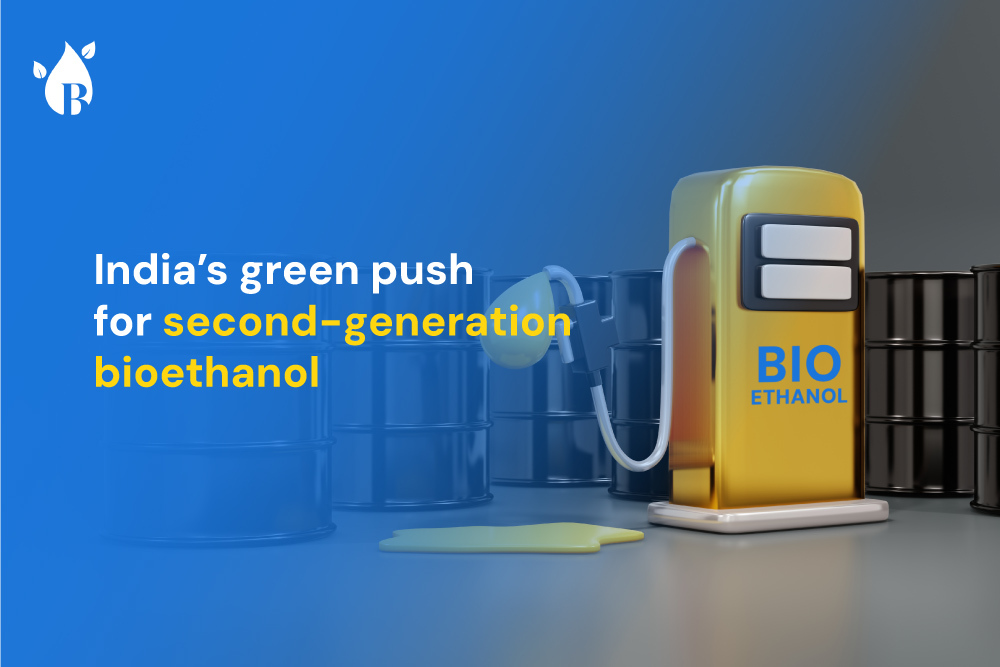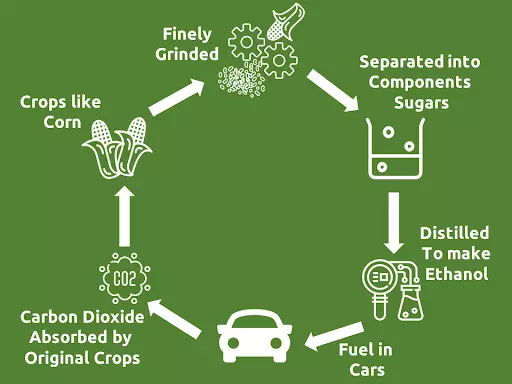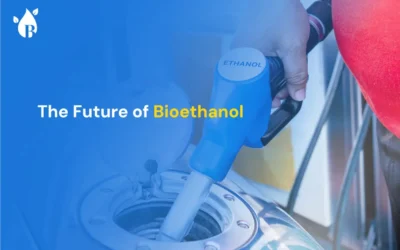
India’s bioethanol industry is more policy-driven. Why is the government determined to develop it at all cost? This blog will brief about the second-generation bioethanol, its significance and roadmaps formulated.
Ethanol is stealing the spotlight in today’s news. Have you noticed the vibrant green E20 sticker proudly adorning your newly purchased two-wheeler? I certainly have! But what does it signify? Why is the government so determined to promote its usage?
The E20 green sticker signifies the compatibility of your vehicle with a blend of 20% ethanol and 80% gasoline. Let me enlighten you with why, what and how.
Introduction to Second-Generation Bioethanol
Second-generation bioethanol is a type of biofuel made from non-food feedstocks such as agricultural waste, forest residues, and energy crops. Unlike first-generation bioethanol, which is made from food-based crops such as corn and sugarcane, second-generation bioethanol does not compete with food production and can utilize waste materials that would otherwise be burned or left to degrade.

Source credit: Techooid
Why Bioethanol Matters for India?
The rate of energy consumption is increasing at an alarming pace worldwide, and India, being at its prime, is experiencing a surge in energy demand. Factors like population growth, urbanization, and various other factors contribute to this ever-increasing demand for energy.
In order to address these challenges, the adoption of biofuels, such as bioethanol, offers numerous advantages. Not only does it help reduce our reliance on foreign imports, but it also enhances energy security and mitigates carbon emissions.
Fortunately, India is blessed with a rich abundance of biomass resources. The country produces a significant amount of agricultural residues, including rice straw, wheat straw, sugarcane bagasse, and corn stover. These resources, which were previously considered waste, can now be transformed into valuable feedstocks for second-generation bioethanol production. So, why not use it the way it deserves?
“The International Energy Agency (IEA) forecasts that India will surpass China and become the world’s third-largest producer of ethanol by 2023”
India’s Thrust on Second-Generation Bioethanol Development
In order to promote the use of biofuels in transportation and address the increasing demand for energy, the Indian government launched the National Biofuels Policy in 2018. This policy lays out a plan to increase the use of biofuels to 20% of all transportation fuel by 2030, with a specific focus on the production of second-generation bioethanol.
To achieve this target, the government has also introduced the “Roadmap for Ethanol Blending in India 2020-25,” which outlines annual plans to increase domestic ethanol production in line with the target of the amended National Policy on Biofuels (2018). Additionally, this roadmap is aligned with the Ethanol Blended Petrol Programme, which aims to achieve a blending of 20% ethanol in petrol by 2025/26.
The roadmap proposes the following milestones:Raise pan-India ethanol production capacity from the current 700 to 1500 crore litres.
Phased rollout of E10 fuel by April 2022. Phased rollout of E20 from April 2023, its availability by April 2025. Rollout of E20 material-compliant and E10 engine-tuned vehicles from April 2023. Production of E20-tuned engine vehicles from April 2025. Encourage use of water-sparing crops, such as maize, to produce ethanol. Promote technology for the production of ethanol from non-food feedstock.
In June 2022, India achieved an average blending rate of 10% ethanol in petrol.
Roadmap source: IEA
Roadmap source:
The International Energy Agency (IEA) forecasts that India will surpass China and become the world’s third-largest producer of ethanol by 2023, as the country’s policies promoting the use of biofuels continue to drive growth.
The International Energy Agency (IEA) forecasts that India will surpass China and become the world’s third-largest producer of ethanol by 2023, as the country’s policies promoting the use of biofuels continue to drive growth.
Limitations in Second-Generation Bioethanol
The adoption of second-generation bioethanol in India faces several challenges. Firstly, the cost of establishing a bioethanol production facility can be high, and feedstock availability and logistics can be complex. Secondly, the bioethanol market in India is still in its early stages, and consumers may be hesitant to adopt a new fuel, potentially leading to slow adoption rates. Finally, the government’s target of 20% biofuel usage by 2030 may be challenging to meet, as this requires significant investment and infrastructure development.
Final Words
Undoubtedly, India is having bold ambitions and determined commitment. Though adoption of this advanced biofuel faces its fair share of challenges, the potential benefits it promises are manifold. With continuous research, technological advancements, and collaboration between the government, industry, and academia, these challenges can be overcome.
Join Buyofuel today and make a conscious choice by purchasing biofuels that are environmentally friendly and contribute to a cleaner tomorrow. Every count matters.



